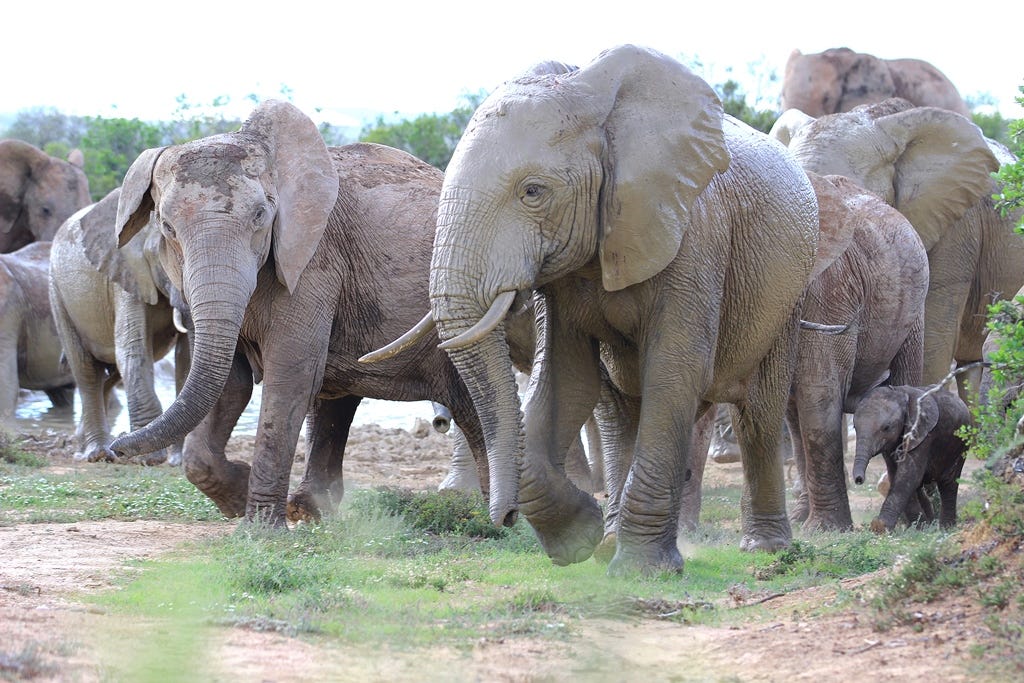
Recent rains in the Eastern Cape province have made a visible difference to the landscape in the region and especially to the vegetation in the Addo Elephant Park (AEP). Instead of everything being brown and dusty, now many shades of green dominate the panorama.
Bright green spekboom bushes are among the elephants’ favourites, but there is also an array of colourful wildflowers providing a much cheerier backdrop to our game drives in the park.
While my Wife and I certainly enjoy the fresher looking countryside, we don’t go to the AEP to see vegetation. We go to see animals and birds. More often than not, the main focus of attention, and of course of my camera, falls on the large elephant population that gives the park its name.
Drought has been the norm in the province over the last decade or so. This has had a significant impact on the way our game drives pan out.
In centuries gone by, long before colonisers brought guns and shot as many animals as they could, many species would migrate if there was a drought. If there was not enough water in an certain area, they would travel long distances to find a river or a lake.
Dutch and British colonisers arrived with guns and farming equipment in the 1700 and 1800s. They erected fences to enclose property that they claimed. While the fences secured farming land, they also blocked migration routes and forced animals to either suffer in drought stricken areas or risk knocking down fences and getting shot by farmers.
When the AEP was proclaimed in 1931, it became evident that water had to be brought in to ensure the survival of elephants and other wildlife within the reserve. To this day, water is pumped into several of the larger, and better known watering holes including: Hapoor, Marion Baree, Rooidam and Domkrag.
The artificial water supply has ensured the survival of the park’s wildlife, but it has also created a dependency on human intervention. It also means that when a lack of rainfall desiccates the park’s vegetation, most animals need to visit the water holes regularly.
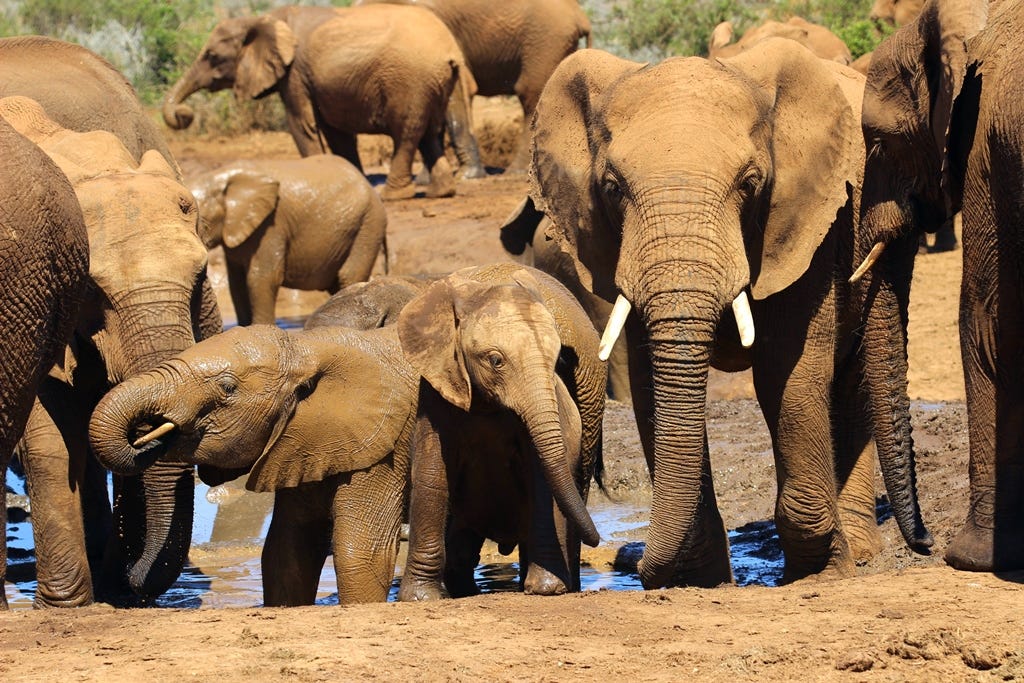
This is harsh on the animals, but great for visitors who love to admire wildlife and take photographs. When rainfall is scarce, skies are blue and the sun is shining brightly, there are few places better than the AEP for taking photographs.
This is particularly true for elephants because the biggest land animals on earth need to drink enormous amounts of water every day. Furthermore, when it is hot they love to splash in the cooling waters and wallow in mud to protect their skin against parasites.
Recent rains have changed all of that. There is water all over the park – in small pools, dried up water holes and ditches by the side of the road. There is no need to go to the bigger waterholes.
Usually sure-fire photo locations such as Hapoor and Marion Baree have been devoid of all animal life. The grass and bushes around these artificial water holes are recovering well but the only wildlife present were a few coots, Egyptian geese and some terrapins struggling to cling to the bank.
On the other hand, there has been a much more even spread of animals across the park.
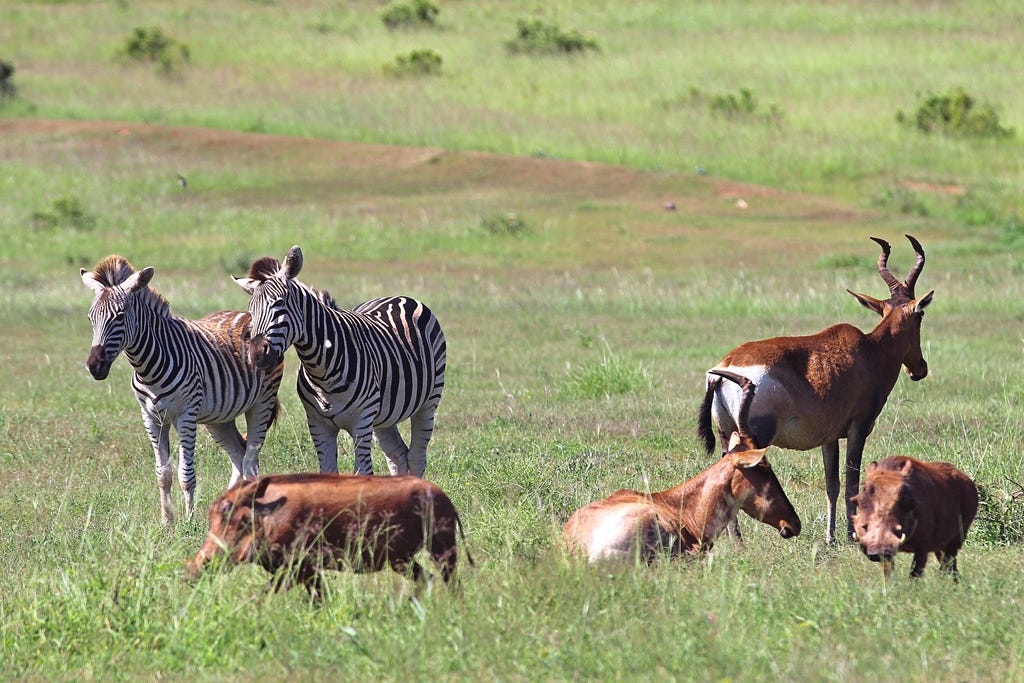
This also means that sometimes too many animals gather around tiny puddles to quench their thirst. I saw about twenty elephants go for a drink and mud bath in Graham’s Pan, a little water hole that is more often bone dry than anything else.
Commotion outside Jack’s Place
Earlier this week, Ilza (Wife) and I were in the park and decided to go for our usual bathroom break at Jack’s Place – a picnic site more or less in the middle of the main section that has comfortable, semi-private enclosures where you can braai (barbecue) and have some lunch. More important it has toilets and a map where visitors can put coloured magnets on places where they have seen animals.
To get to Jack’s Place there is a short dirt road with a sharp, blind curve before you get to the sliding gate. Just before the curve, there is a small (maybe 50m2) water hole that is almost always completely dry and doesn’t even have a name. This week it was quite full.
We saw two elephants standing on the side opposite to the road and took a few photos. We then went to use the facilities round the bend at the picnic spot. In the bathrooms we could hear elephants trumpeting so we did our business and rushed back because, well . . . FOMO.
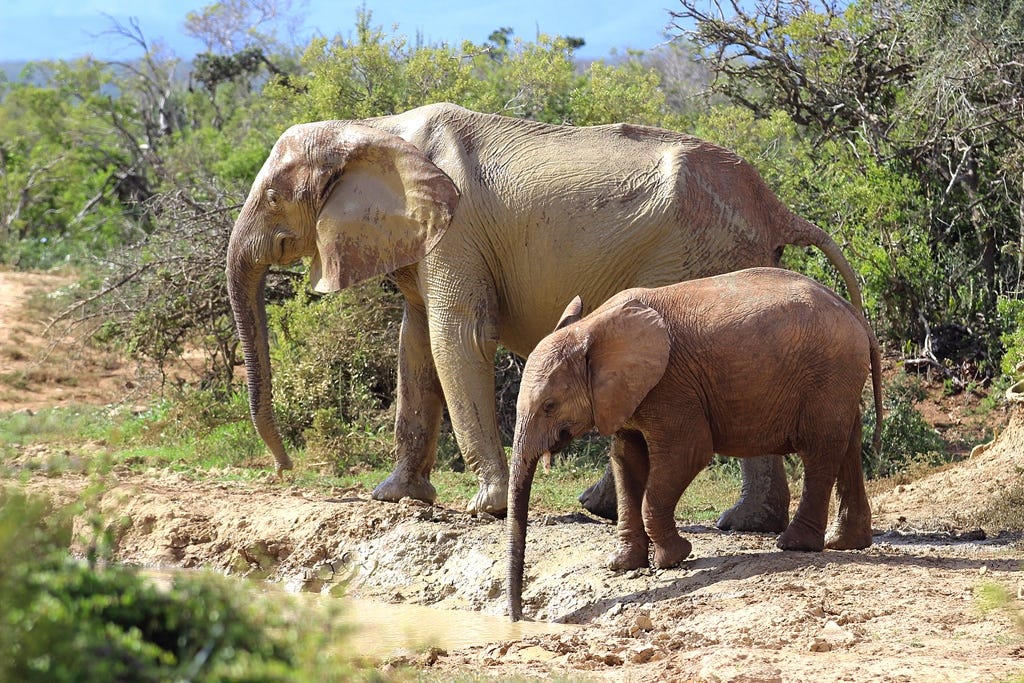
As we rounded the curve on our return, the road was blocked by other vehicles that had stopped to watch more elephants arrive at the waterhole. We didn’t mind about the roadblock because we also wanted to photograph the new arrivals. I manoeuvred the car as close to the edge of the road where we could get a good view of the waterhole about 30 metres away – a great distance for my 70-200mm lens.
More cars arrived and took their position behind us until we were completely blockaded, but well positioned with a good angle of sight.
More elephants arrived at the already over-crowded water hole. When there were mainly cows and their offspring, the situation was quite peaceful. They immersed themselves in the muddy water and sprayed themselves flamboyantly. The young ones seemed to be having an especially good time playing with each other in the mud.
Then some big bulls appeared on the scene – irritatedly trumpeting and pushing their considerable weight around. It quickly got ugly.
It’s hard to estimate how many elephants were in the melee. The water hole is small and there are lots of bushes in the surrounding area where panicked elephants were running up and down, changing direction every few seconds. They were trumpeting and running in all directions.
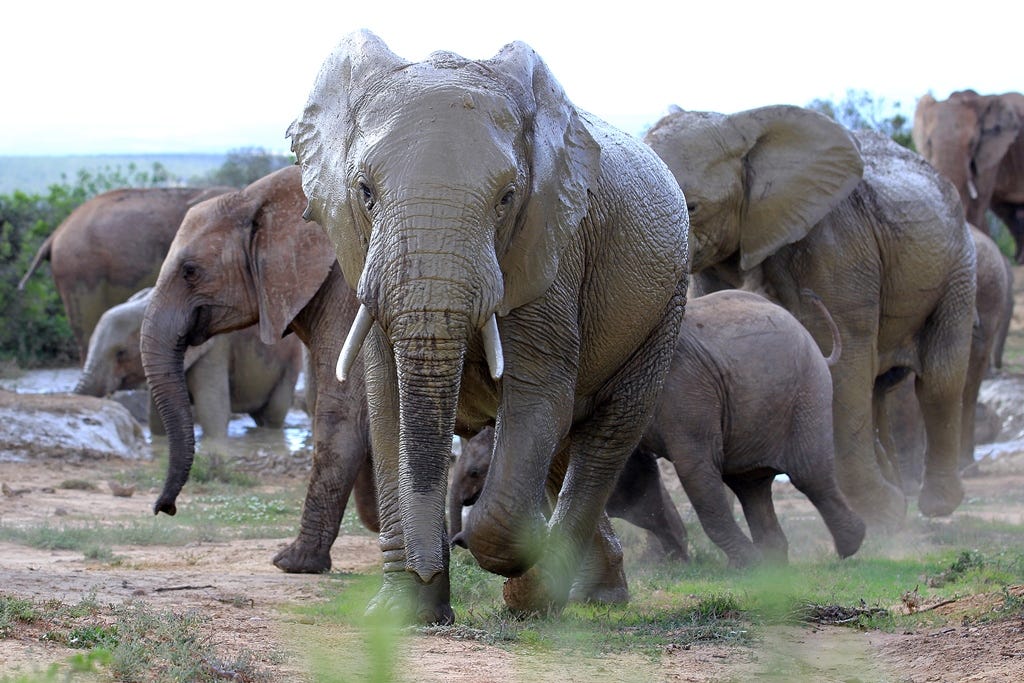
It was terrifying. I was scared as it only needed one panicked pachyderm to come charging at our car, but at the same time I was ecstatically elated because I knew that I was getting great photographs. Ilza was just as nervous – warning me, “Steven, look at that one in front of us. He’s looking right at us”.
“Watch out for that other one coming out of the bushes on the side”.
Warning me could never help as there were cars all around us. I could not move in any direction and one of the cars in front was inching backwards towards us.
As nervous as she was, Ilza kept her camera rolling and recorded some really great footage on her cellphone.

A game viewing vehicle was parked to the left behind us. I thought we could get out of the way if the guide backed up his cruiser, but he was just looking at his phone.
I knocked on the back window to get his attention, but when I motioned him to move back, he refused and suggested I push on. This was very irresponsible as he had tourists in his vehicle.
Fortunately, after a few minutes the commotion died down. Many of the elephants simply ran away and left the water hole to the bully bulls.
It was a very exciting sighting. Adrenaline rushed through my veins for quite some time afterwards. I was very pleased with the outcome as it made our relatively short visit a big success.
I hope you enjoy the pictures in this, the first edition of the Real Safari Newsletter for 2022. If you haven’t already, please hit the subscribe bottom below and please share with your friends.




